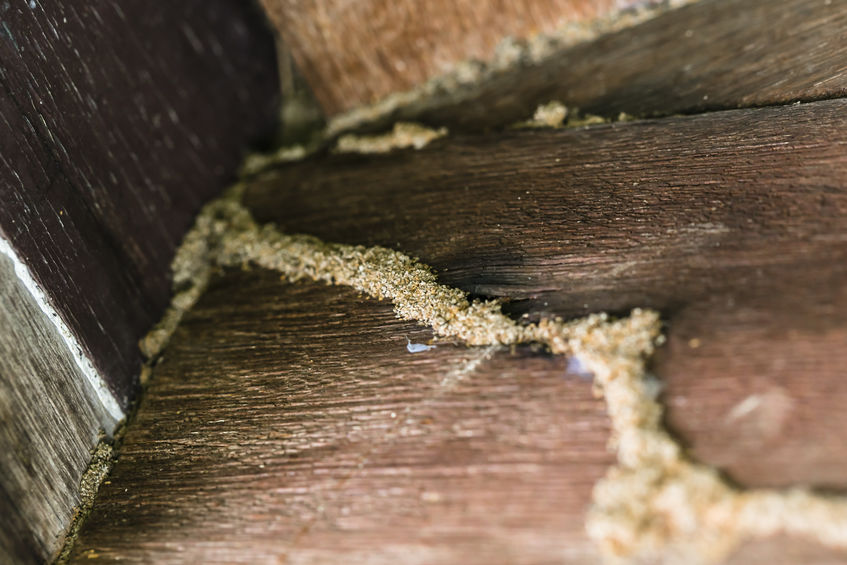Unlike drywood and dampwood termites, neither of which can be found in Massachusetts, subterranean termites live below the ground surface where workers gather food for their nestmates by excavating foraging tunnels in the soil. The most economically significant, destructive and widespread termite pest species in the US, the eastern subterranean termite, is the only termite species found in Massachusetts, but these termites are particularly abundant in urban and suburban regions throughout the state. Although exceedingly rare, subterranean termites have been known to infest the structural wood in homes without ever making contact with their usual soil habitat. In order for this to occur, interior temperatures, the quality and abundance of wood, and the moisture content of wood must be just right.
Subterranean termites are highly dependent on the constant hydration that moist soil provides, and if they make contact with the dry outside air, they will rapidly dessicate and die. In order for subterranean termites to access above ground structural wood while also avoiding air exposure, workers use a mix of soil, saliva and excrement to create a hardening material that they use to build airtight “mud tubes,” or “or shelter tubes.” Mud tubes provide a direct connection between moist soil and above ground structural wood in homes, allowing wood-eating worker termites to travel to their soil habitat as needed for hydration. However, subterranean termite workers may be able to survive without ground contact as long as the structural wood they infest is damp enough to meet their hydration needs. Once again, subterranean termite infestations of this sort are very rarely encountered, and the vast majority of infestations are first noticed by the presence of mud tubes running vertically along the foundation of homes.
While mud tubes allow subterranean termite workers to access much needed water, they do not necessarily protect workers from desiccation. A study determined that the relative humidity within mud tubes is often identical to the relative humidity immediately outside of mud tubes, indicating that workers do not rely on mud tubes to maintain proper humidity levels. That being said, mud tubes do protect workers from wind gusts that would have a desiccating effect, but in crawl spaces where outside wind cannot be felt, and where moisture content is already high, subterranean termite workers would likely survive above soil without the protection of mud tubes.
Have you ever encountered mud tubes within your crawl space?

